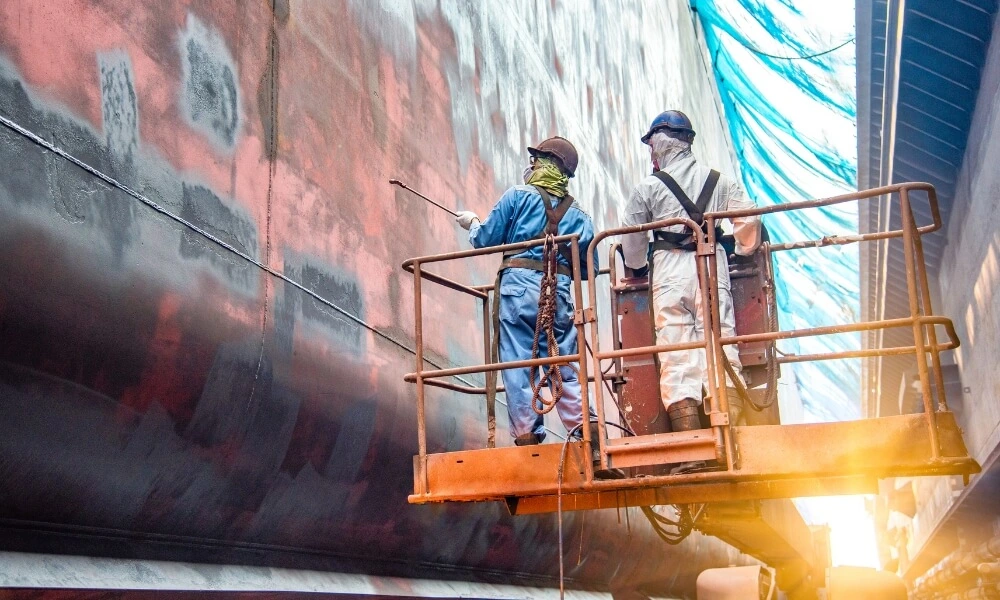In occupational safety, ensuring protection against falls ranks paramount, especially in industries where working at heights is an everyday reality. Fall-related incidents can lead to catastrophic injuries and can be fatal. For this reason, understanding the nuances of fall protection systems becomes crucial. The terms “active” and “passive” frequently emerge in these discussions, but what do they truly mean in the context of fall protection?
This blog will delve into the intricacies of active and passive fall protection systems, highlighting their major differences and showing which might be best suited for specific scenarios. Whether you’re a safety professional, a manager looking to improve workplace safety, or simply curious, this guide is tailored to equip you with essential insights into these critical safety measures.
What’s Active Fall Protection?
Active fall protection refers to systems and methods that require active involvement from the worker to ensure safety against fall hazards. These systems are often dynamic, involving specific equipment and procedures, and are intended to prevent the worker from reaching a fall hazard or arrest a fall should one occur. Let’s dive deeper into the elements and benefits of active fall protection.
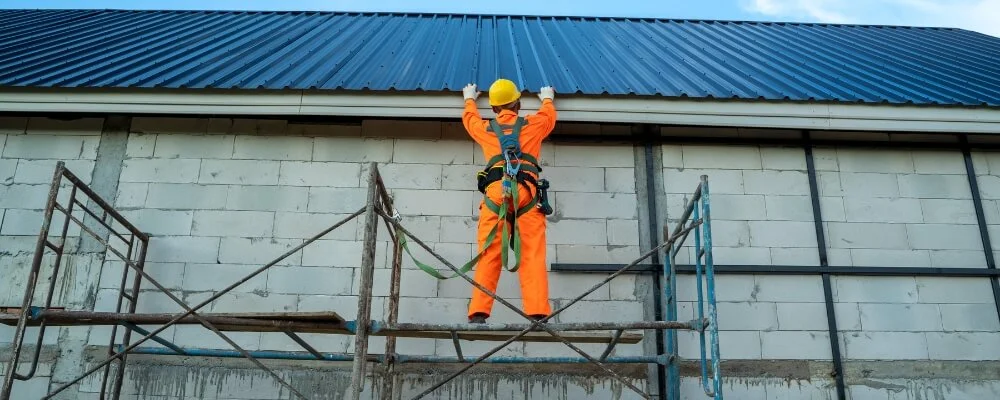
1. Components of Active Fall Protection
- Harness: The primary wearable piece of equipment for the worker, designed to distribute fall forces over a larger area of the body and minimize injury during a fall. It wraps around the user so that the most robust body parts (such as the thighs and torso) bear the brunt of the stopping force in the event of a fall.
- Lanyard: This is a flexible line of rope, wire rope, or strap, usually attached to the harness. Lanyards can be fixed in length or adjustable and have energy-absorbing features to reduce the impact of a fall.
- Self-retracting lifelines (SRLs): A lanyard type that automatically tension and retracts. If a worker falls, the device quickly stops the fall, minimizing the fall distance and, thus, the potential injury.
- Anchorage: A secure attachment point for lifelines, lanyards, or deceleration devices. Anchorages must be stable and capable of supporting the intended loads.
- Connectors: These devices, like carabiners or snap hooks, connect various parts of a fall protection system.
- Rope grabs: These devices move along a vertical lifeline and automatically engage and break the fall if a sudden movement (like a fall) is detected.
- Horizontal and vertical lifelines: Systems that allow workers to move along a horizontal or vertical path while still being tied off. A horizontal lifeline might stretch across the roof of a building, for example, while a vertical one might be used alongside a ladder or tower.
2. Types of Active Fall Protection
- Fall Restraint: This system prevents workers from reaching a fall hazard in the first place. A worker might wear a harness connected to an anchorage by a lanyard of such a length that they cannot physically reach the fall hazard. This is preventive in nature.
- Fall Arrest: If a fall occurs, it will stop or “arrest” it before the worker hits the surface below. The system is designed to minimize injury to the worker during the fall and its sudden stop.
3. Advantages of Active Fall Protection
- Flexibility: Active systems often allow workers to move freely across large areas or varying heights, making them ideal for jobs that cover expansive areas like construction sites or maintenance tasks on large machinery.
- Safety: When used correctly, active fall protection systems can significantly reduce the risk of serious injury from falls.
- Adaptability: Active systems can often be combined, tailored, or adjusted to fit the specific needs of a work environment.
4. Challenges and Considerations
- Training: Active fall protection systems require comprehensive training for workers. They must understand how to wear, adjust, and inspect their equipment and understand the limitations and capabilities of the system they’re using.
- Inspection and Maintenance: Due to their dynamic nature, active systems often require regular checks and maintenance to ensure they remain in good working condition.
- Potential for Misuse: Active systems can give a false sense of security if not used correctly. Workers must understand and respect the equipment’s capabilities and limitations.
In summary, active fall protection systems provide critical safety measures for workers in environments where fall hazards exist. They are designed to actively involve the worker in their safety by preventing access to fall hazards or arresting a fall should one occur.
Proper training, equipment maintenance, and safety awareness are essential for using active fall protection systems effectively.
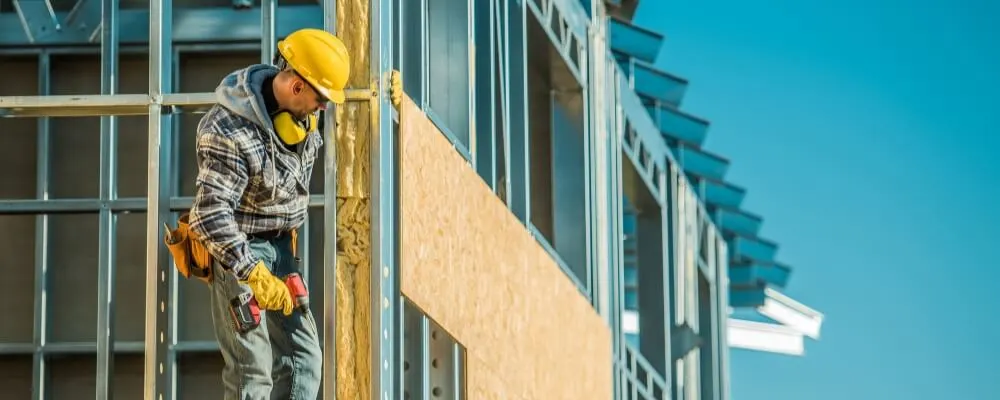
What’s Passive Fall Protection?
Passive fall protection refers to systems that provide a barrier between the worker and the fall hazard without requiring active involvement or special equipment usage by the worker. These systems are stationary, non-dynamic, and are typically set in place before work starts. They are there to ensure that workers cannot reach or fall into a hazard area.
1. Components of Passive Fall Protection
- Guardrails and Handrails: These are barrier systems placed around the perimeter of a hazard area, such as the edge of a roof or an open pit. They physically prevent workers from accidentally stepping or falling into the hazardous zone.
- Safety Nets: Positioned beneath a work area, these catch workers if they fall. They’re commonly used in construction sites, especially when work is being done several stories above the ground.
- Warning Lines: These lines or barriers demarcate a safe working area. While they do not physically prevent a worker from crossing into a hazardous area, they are a visual indicator.
- Toe Boards: These are barriers installed at floor level to prevent tools or other objects from falling off the edge and becoming potential hazards to people below.
- Covers: Used to cover open holes or risky areas on floors, roofs, or other surfaces. When properly secured and labeled, they ensure that workers or equipment do not accidentally fall through.
2. Advantages of Passive Fall Protection
- Simplicity: Once installed, passive systems require minimal interaction, reducing the chance of user error.
- Collective Protection: Passive systems often protect everyone in the area without requiring individual equipment or actions.
- Low Maintenance: Compared to active systems, passive protection typically needs less frequent checks and maintenance.
- Ease of Use: Workers don’t need specialized training to benefit from passive systems, unlike active systems, where proper usage and understanding are crucial.
3. Challenges and Considerations
- Installation: Setting up some passive systems, especially those meant for permanent use, can be resource-intensive.
- Mobility: Passive systems may limit the mobility of workers, especially if the protected area is extensive.
- Space Consumption: Features like safety nets or large guardrails can consume significant space, which may not be ideal for all work environments.
4. When to Use Passive Fall Protection
- Permanent Work Areas: Places where work occurs frequently, like rooftops with HVAC units, benefit from permanent passive systems like guardrails.
- Short-term Projects: Features like safety nets or temporary guardrails can be beneficial for temporary projects like construction.
- In Combination with Active Systems: In many scenarios, passive and active fall protection methods can offer the most comprehensive safety solution.
In conclusion, passive fall protection systems offer a barrier-based approach to ensure worker safety. They’re especially useful in environments where the risk of falls is persistent or where workers may not be consistently vigilant about potential hazards.
While they might not offer the flexibility of active systems, their simplicity, and ability to protect multiple individuals simultaneously make them an essential tool in the arsenal of workplace safety measures.
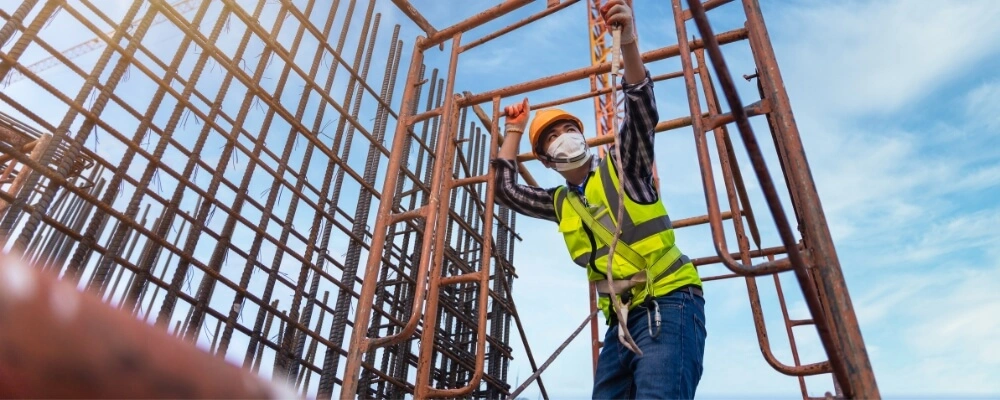
Difference Between Active and Passive Fall Protection
Active and passive fall protection systems are essential to workplace safety, especially in industries where workers are exposed to fall hazards. Each has its unique attributes and applications. Here’s a breakdown of the differences:
Nature of Protection
- Active: Involves equipment and actions that directly involve the worker, aiming to stop or arrest a fall that is either imminent or occurring.
- Passive: Creates a barrier between the worker and the fall hazard without the worker’s direct involvement.
User Involvement
- Active: The worker must wear, maintain, and adjust specific equipment.
- Passive: Once set up, no further involvement or equipment adjustment is needed from the worker.
Components
- Active: Includes harnesses, lanyards, anchor points, and connectors.
- Passive: Features elements like guardrails, safety nets, covers, and toe boards.
Purpose
- Active: Designed to either restrain workers from reaching a hazard or arrest a fall that’s in progress.
- Passive: Aims to prevent the possibility of a fall from occurring in the first place by blocking access to fall hazards.
Training Requirements
- Active: Extensive training is crucial, ensuring workers use the equipment correctly.
- Passive: Requires less training to ensure workers recognize and respect the established barriers.
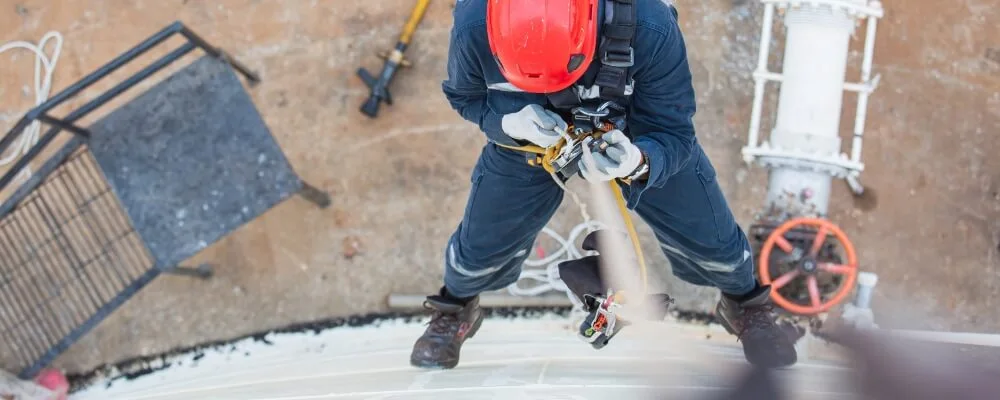
Application Scenarios
- Active: Suitable for situations where workers must frequently move in and out of fall hazard zones or where passive systems aren’t practical.
- Passive: Ideal for fixed hazard areas, like the perimeter of a rooftop or around open pits.
Flexibility
- Active: Offers greater flexibility for worker mobility, especially in varying environments.
- Passive: Might restrict certain movements or access but provide consistent protection in the delineated areas.
While active and passive fall protection systems aim to protect workers from falls, they differ in user involvement, components, training, and application. The choice (or a combination of both) depends on the specific work environment and tasks.
Conclusion
In the vast landscape of workplace safety, active and passive fall protection systems stand as two vital pillars, each with its distinct approach and applications. While active systems demand worker interaction and specific equipment to halt or limit a fall, passive systems prioritize creating an environment where falls are prevented from occurring in the first place. Both have their own merits and are indispensable in different scenarios.
Ultimately, the choice between active and passive systems isn’t about picking one over the other universally; it’s about understanding the specific needs of a work environment and implementing the most effective solution. A comprehensive grasp of these systems is essential as we strive for safer workplaces.
By selecting and employing the right fall protection strategies, we not only adhere to industry standards and regulations but, more importantly, we champion the safety and well-being of every worker on site.

